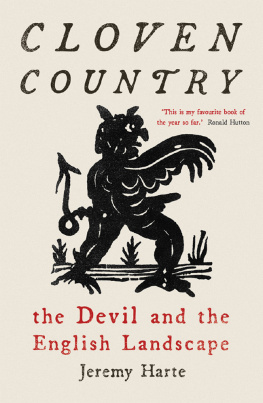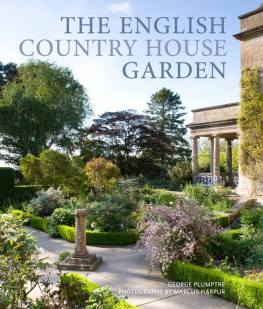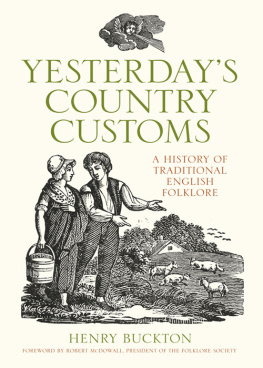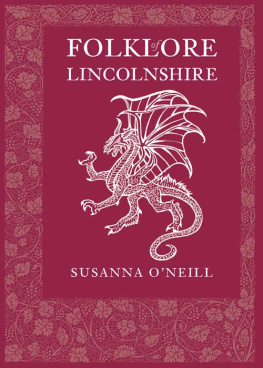CLOVEN COUNTRY

CLOVEN
COUNTRY
the Devil and the English Landscape
Jeremy Harte
REAKTION BOOKS
For Sophia, a devilish good companion
Published by Reaktion Books Ltd
Unit 32, Waterside
4448 Wharf Road
London N1 7UX, UK
www.reaktionbooks.co.uk
First published 2022
Copyright Jeremy Harte 2022
All rights reserved
No part of this publication may be reproduced, stored in a retrieval system, or transmitted, in any form or by any means, electronic, mechanical, photocopying, recording or otherwise, without the prior permission of the publishers
Page references in the Index match the printed edition of this book.
Printed and bound in Great Britain
by TJ Books Ltd, Padstow, Cornwall
A catalogue record for this book is available from the British Library
eISBN 978 1 78914 651 6
CONTENTS
INTRODUCTION
I gazed down the chasm, its rocky walls receding below me as if the cleft would continue forever to the lowest smoking pit. This was the Devils Chimney, they said. Whoever named it, named it well. What ancient pagan rites, what passionate missionary sermons, what stubborn Puritan struggle against the allure of the dark had gone into the making of that place-name?
Once I was home, I checked through all the historic maps of Ventnor that I could find. The Devils Chimney first appeared in 1978. Before then it had just been a crack in the ground.
From that moment I began to look at the Devil in a new light. It wasnt just place-names: wherever I turned to legends, ballads, superstitions, the lore of uncanny places he always turned out to have been a late arrival at the board of folklore. Yes, there was a vivid canon of Devil stories, but some of them had first been told about giants, and others were stolen from the fairies. Perhaps that explained the cheerful turn of the lore, in which the Devil seemed more buffoon than fiend: bumbling, easily fooled. Even in the more sinister tales it was easy to see how the one Devil of modern narrative had taken over plot lines originally sketched out for the innumerable devils, demons or uncanny spirits of medieval tradition.
This was a surprising development in the history of folklore, but it is there for anyone to see once you appreciate that folklore actually has a history. Within the last generation we have turned away from talking about legend and tradition as if they came from the immemorial past, and realized instead that oral narrative develops and changes just like written literature. Because it is the spoken word, it can live and fade away untraced no doubt many flourishing cycles of storytelling are now lost beyond recall but there have always been a few curious literate people who wrote down what they heard. The records of past folklore are a fragment, but they are a representative fragment.
England never saw the systematic collecting of local lore that was carried out in other countries. Instead, in a typically English way, our stories have come down to us in a muddle of guidebooks, scribbles in the corners of maps, amateur poetry and notes for antiquarians. These sources speak in many voices, but mostly middle-class ones, because it was gentleman amateurs who recorded and retold the stories. Comic verse by country vicars may not be to everybodys taste, but that is what survives from the eighteenth and nineteenth centuries; for authentic transcripts of what people really said, we must turn to the more modern collections of Scotland and Ireland.
In any case, authenticity is something of a will-o-the-wisp when we are tracking these traditions, because they have passed through written channels as often as oral ones. Much of our Devil lore derives from memories of the Grand Tour, copy-writing for visitor hot-spots and half-remembered German ballads. With this in mind, I have not scrupled to retell the stories myself, one more link in the long chain of oral and written technique. I hope that I have done them justice by giving a feeling of what the stories themselves are really like, without the period dress of yesterdays prose style.
For stories exist independently of the words in which they were told, or the occasions on which they were performed. Given the bare bones of who and where and when, a skilful performer can tweak the narrative a little to change the atmosphere or the sympathies of the audience, but each story has a grain of its own which determines what is possible in performance. Even the laboured efforts of the Victorian moralist cannot disguise an underlying flippancy in much of our Devil lore. The masks of comedy and tragedy are not interchangeable.
This story-Devil is the demotic brother of the sermon-Devil, both of them children of popular Christianity, but quite different in their character and the company they keep. Occasionally, it is true, a flash of hellfire reminds us that the popular Devil has something in common with his theological twin. Not wanting to disappoint the cultists of folk horror, I have marshalled my Devils on a darkening spectrum from cheerful to dreadful. The grimmest stories are the rarest, and lie under suspicion of being worked up for the literary market. What looks like blood on Satans claw usually turns out to be blackberry juice, and most of the time he is just kidding: a trickster whose wiles are easily outwitted by the little man. This is not a book for the Christmas stocking of the Satanist, and it may disappoint religious people for whom the Devil is a real and terrible presence, but for anyone who likes good-humoured drama and (mostly) happy endings against the backdrop of the English countryside, I hope it will be a damned good read.

The Devils Dyke, Brighton.
1
HIS WORK UNDONE: THE DEVILS AMBITIOUS PROJECTS FAIL
Mighty works have been attributed to the Devil great rifts in the landscape and wonderful feats of road-building but his industry always ends in failure. Outwitted by clever mortals, he leaves a half-finished monument. Sometimes his plans are purely destructive and he sets out to drop a small hill on a town, but then he will be talked out of it by a clever cobbler. If he builds a bridge, the work will be finished on time but he never gains the soul he hoped to win this way. These stories spread around the country wherever local features were renamed as diabolical landmarks.
The Devils Mighty Works
L eave Brightons urban growth behind, cross the A27 on the outskirts of town, and suddenly you are on unbroken downland. Away to the south, the long sea sprawls; always the same view, grey-blue down there and green up here, the grand simplicity of chalk, until you come to the golf course, which some imaginative club secretary has marked out with little red Devil flags. Go across a field, past hedges drooping under the weight of old mans beard, until suddenly the world drops from your feet and stretching away before you is the vast panorama of the Weald. Cloud-like against the northern sky rise the ridges of the further side, Leith Hill and Box Hill and the Hurtwood. Fields and woods and
The Devil likes a good view; he once took his business rival to a high place just to point out details of the vista. Now the National Trust helps out with two concrete blocks framing panoramas, so that we can make out the names of villages in the vale all by ourselves: Fulking, Edburton, Bramber, Steyning. The view is what draws everyone to the Devils Dyke, and it rather upstages the Dyke itself, tucked behind the ridge and easily passed without noticing as you head to the viewpoint. It is what the geologists call a re-entrant valley, in plan like a backwards quiver of a pencil tracing the line of the South Downs. Long, straight and incredibly steep-sided, this is a remarkable valley but not unique simply a larger version of the other combes cutting into the fretted escarpment.











